7 Tips to Craft a Winning Presentation and Deliver It Well
One of the best parts about attending professional conferences is the inspiration you gain from listening to the speakers. But how do you go from conference attendee to speaker? How do you become the presenter whose session ignites passion and leaves people feeling excited to go back to work with new tools and ideas?
The truth is: you could be sitting on a great presentation and not even know it. We spoke with some industry all-stars who’ve led sessions at the Carolinas Healthcare Public Relations & Marketing Society (CHPRMS) annual conference over the years to find out what makes a great presentation and how to deliver it well.
1. Answer the question, “So, what?”
The goal is to show how you solved a problem and how others can do it, too. You want to make sure the content you provide is actionable, replicable and scalable, says Susan Dubuque, healthcare writer and strategist. Don’t make the presentation all about your work without providing insight on how others can achieve the same success. Dan Dunlop, principal at Jennings, recommends answering the question, “How does this apply to me in my role at my institution?”
“As marketers and communicators at a conference, we’re looking for content we can learn from and implement—ideally within a few weeks,” says Andy Lyons, Director of Corporate Communications & Content Strategy at Roper St. Francis Healthcare. “I think my greatest ‘aha’ moments at conferences come when I see someone talk about doing something that seems so obvious yet so attainable, that I think ‘why am I not doing that?’”
2. Choose a relevant topic that you are passionate about.
When choosing a topic, think about what is important to you. Chances are that those topics will also be relevant to those who are attending the conference, Dubuque says.
A good rule of thumb is to ask yourself and your colleagues, “What keeps you up at night?”
Then, make yourself an expert in that area. Do your research and study industry trends. And perhaps most importantly, make sure it is something you are truly passionate about. The audience will see through it if you’re not.
“Everyone is talking about artificial intelligence (AI) in healthcare marketing but if you’re not an expert on that subject and if you’re not passionate about it, then it’s not right for you,” Dunlop says. “Talking about something you really care about naturally makes you a better speaker.”
3. Craft a catchy title.
What you call your presentation matters and will be a factor in whether people choose to attend your session. Make it something catchy that will capture attention, while also showcasing the topic’s relevance, Dubuque says. Even if your topic is basic, try to think of a fresh angle you can take.
4. Show, don’t just tell.
Show your listeners—don’t just tell—how you solved a problem or made something better, Lyons says. Lean into good storytelling and include as many visuals and examples as possible.
“I try to make the slides conversational and approachable and include something that connects us together, such as pop culture references,” Lyons says.
5. Embrace failures.
Some of the best presentations include details on what worked AND what didn’t.
“I love sessions that show how a leader stepped outside the box to solve a problem, and it worked,” Lyons says. “And if their approach failed ever so slightly and they needed to make adjustments, well then that’s even better. That’s real. That’s helpful.”
6. Don’t let imposter syndrome get in the way.
It’s easy to doubt yourself as a thought leader or convince yourself that you’re not cut out to be a speaker. And almost everyone gets nervous. But it helps to remember that your presentation is not about you.
“Consider yourself a teacher or instructor—not a speaker,” Dubuque says. “It’s all about what you can give your audience that is beneficial and useful to them. And remember, your audience wants you to succeed.”
And to loosen up before the presentation, Dubuque also recommends going into the room where you will be speaking a little early and chatting with people as they arrive. Introduce yourself and encourage people to sit in the front so they can part of the conversation.
7. Plan how you will engage the audience.
The way that you present your information is just as important as the content you want to convey. Speakers who deliver great in-person presentations usually embrace the audience.
“When I’m with an audience, I recognize that we are about to have a shared experience,” Dunlop says. “I want them to be a part of that experience, not just a receiver of information. I work hard to be human and relatable throughout my time with the audience.”
To keep the audience on their toes, some speakers sometimes pass out candy or prizes. Dubuque recommends getting out from behind the podium, walking around and talking to individual listeners for a few seconds at a time.
“If all you do is talk, audience members will be on their phones in a minute,” Dubuque says. “Ask questions. Call on people. Take a poll. Give them a little assignment or task to do right there in the session. Encourage questions and contributions. People in the audience have great things to share—it will only enhance your presentation.”
And remember that a little humor can go a long way.
“Have fun. Make fun of yourself. Make the audience laugh,” Lyons says.
If you’re interested in becoming a speaker at the CHPRMS annual conference, visit https://www.chprms.org/call-for-speakers.
